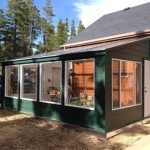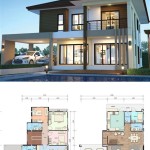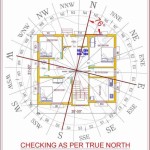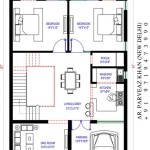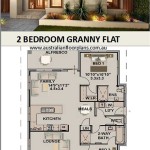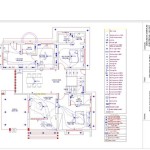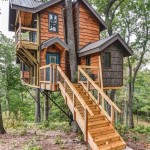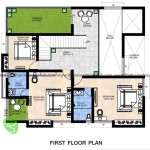European House Plans With Basement: Exploring Design and Functionality
European house plans, known for their elegance, intricate detailing, and timeless appeal, have significantly influenced residential architecture across the globe. When combined with the practicality of a basement, these designs offer a unique blend of aesthetic beauty and enhanced functionality. Integrating a basement into a European-style home provides additional living space, storage solutions, and potential for various specialized rooms, all while maintaining the architectural integrity of the exterior design.
The allure of European house plans lies in their diverse architectural styles. From the grandeur of French chateaus to the rustic charm of Tuscan villas and the clean lines of Scandinavian designs, European architecture encompasses a broad spectrum of aesthetic preferences. Each style boasts distinctive characteristics, such as steeply pitched roofs, arched doorways, prominent chimneys, and the use of natural materials like stone and brick. The incorporation of a basement complements these architectural nuances by providing a hidden yet valuable expansion of the home's overall footprint.
When planning a European house with a basement, several factors must be considered. These include the specific architectural style, the intended use of the basement space, the local climate and soil conditions, and the regulatory requirements of the building jurisdiction. Careful planning and collaboration with experienced architects and contractors are essential to ensure a successful and functional integration of the basement into the overall design.
Optimizing Space and Functionality: The Benefits of a Basement
The primary advantage of including a basement in a European house plan is the significant expansion of usable space. A basement can serve as a multi-purpose area, accommodating various needs and activities. It can be transformed into a recreational room, a home theater, a gym, a home office, or even additional bedrooms and bathrooms, effectively doubling the living area of the house. This is particularly beneficial for families who require more space but wish to maintain the aesthetic integrity of the original European design.
Beyond living space, basements offer excellent storage solutions. They can be utilized to store seasonal items, holiday decorations, tools, and other belongings that might otherwise clutter the main living areas. A well-organized basement can significantly contribute to a more streamlined and clutter-free home environment. In some cases, basements are also used as wine cellars, adding a touch of European sophistication and providing ideal conditions for wine storage.
Furthermore, a basement can provide a safe haven during severe weather events like tornadoes or hurricanes. Being underground, it offers a more secure environment compared to the upper floors of the house. This added safety and security can bring peace of mind to homeowners, especially those living in regions prone to extreme weather conditions.
Architectural Considerations: Adapting European Styles to Basement Integration
Integrating a basement into a European house plan requires careful consideration of the architectural style. The design should ensure that the basement does not detract from the overall aesthetic appeal of the house. This can be achieved through various techniques, such as incorporating walk-out basements that blend seamlessly with the surrounding landscape or using strategically placed landscaping to conceal the basement walls.
For example, when designing a French Country style home with a basement, the exterior walls of the basement can be faced with stone or brick to match the facade of the main house. This creates a cohesive look and prevents the basement from appearing as an afterthought. Similarly, for Tuscan-style homes, the use of stucco and terracotta accents can help to integrate the basement into the overall design.
The design of the basement windows is also crucial. Small, strategically placed windows can provide natural light and ventilation without compromising the architectural integrity of the house. Window wells can be used to create a more open and inviting atmosphere in the basement, allowing for larger windows and more natural light.
The slope of the land also plays a significant role in the design. A sloped lot can facilitate the creation of a walk-out basement, where one side of the basement is fully exposed to the exterior. This allows for direct access to the backyard and creates a seamless transition between the indoor and outdoor spaces. This type of basement design is particularly popular in European-style homes that emphasize outdoor living and connection with nature.
Addressing Challenges and Ensuring Structural Integrity
Building a basement involves several challenges that must be addressed to ensure the structural integrity and long-term durability of the house. These challenges include managing moisture, preventing water damage, and ensuring proper ventilation. Proper waterproofing is essential to prevent water from seeping into the basement and causing mold growth or structural damage.
Several waterproofing techniques can be employed, including applying a waterproof membrane to the exterior walls of the basement, installing a drainage system to divert water away from the foundation, and using a sump pump to remove any water that accumulates in the basement. Proper ventilation is also crucial to prevent moisture buildup and maintain air quality in the basement.
The soil conditions in the area also play a critical role in the design and construction of the basement. Soil testing should be conducted to determine the soil's bearing capacity and drainage characteristics. This information is essential for designing a foundation that can withstand the weight of the house and resist the forces of nature.
Local building codes and regulations must be strictly adhered to during the design and construction process. These codes typically address issues such as foundation depth, wall thickness, waterproofing requirements, and ventilation standards. Compliance with these codes is essential to ensure the safety and structural integrity of the house.
Furthermore, energy efficiency should be a primary consideration when designing a basement. Proper insulation can help to regulate the temperature in the basement, reducing energy consumption and lowering utility bills. Insulating the basement walls and floor can also improve the comfort of the living spaces above the basement.
The selection of materials for the basement construction is also important. Durable and moisture-resistant materials should be used to ensure the longevity of the basement. Concrete is a common choice for basement walls and floors, as it is strong, durable, and resistant to water damage. However, other materials such as insulated concrete forms (ICFs) can also be used to provide additional insulation and energy efficiency.
Designing a European house with a basement is a complex undertaking that requires careful planning, attention to detail, and collaboration with experienced professionals. However, the benefits of a basement, including increased living space, storage solutions, and added safety, make it a worthwhile investment for many homeowners. By carefully considering the architectural style, addressing the challenges of basement construction, and ensuring structural integrity, it is possible to create a beautiful and functional home that combines the elegance of European design with the practicality of a well-designed basement.
Integrating Modern Amenities: Enhancing the Basement Living Experience
Modern amenities can be seamlessly integrated into a European-style basement to enhance the living experience and create a comfortable and functional space. This includes incorporating features such as smart home technology, energy-efficient lighting, and advanced HVAC systems. Smart home technology can be used to control lighting, temperature, and security systems from a central location, adding convenience and energy efficiency.
Energy-efficient lighting, such as LED lighting, can significantly reduce energy consumption and lower utility bills. LED lights also have a longer lifespan than traditional incandescent bulbs, reducing the need for frequent replacements. Advanced HVAC systems can provide efficient heating and cooling in the basement, ensuring a comfortable temperature year-round.
The design of the basement should also consider the acoustics of the space. Soundproofing materials can be used to minimize noise transmission between the basement and the upper floors of the house. This is particularly important if the basement is used as a home theater or a recreational room.
The layout of the basement should be carefully planned to maximize the use of space and create a functional and inviting environment. Open floor plans can create a sense of spaciousness, while strategically placed walls can define different areas within the basement. Natural light should be maximized by incorporating windows and skylights whenever possible.
The finishes and décor of the basement should complement the overall style of the house. European-inspired décor can be used to create a cohesive and elegant look. This includes incorporating elements such as stone fireplaces, hardwood floors, and ornate moldings. The choice of colors and textures should also reflect the European style of the house.
Ultimately, designing a European house with a basement is a unique opportunity to create a beautiful and functional home that reflects the homeowner's individual style and preferences. By carefully considering the architectural style, addressing the challenges of basement construction, and integrating modern amenities, it is possible to create a home that is both aesthetically pleasing and highly practical.

European House Plan With Walkout Basement 72258

4 Bedroom European Style House Plan With Walkout Basement Coolhouseplans Blog

Luxury 2 Story European House Plan W Basement Option Plans

Plan Pm 80856 1 5 3 Bed European House With Walkout Basement And Deckfor Slopping Lot

Plan 138 304 Houseplans Com European House Plans Basement

Plan 72258 European House With Walkout Basement

European Home 4 6 Bedrm 5 Bath 3302 5020 Sq Ft Plan 106 1292

European House Plans Style Homes

Plan 66248 French Country House With 3193 Sq Ft 4 Bedroom

European Style With 4 Bed Bath 3 Car Garage House Floor Plans Basement Dream

